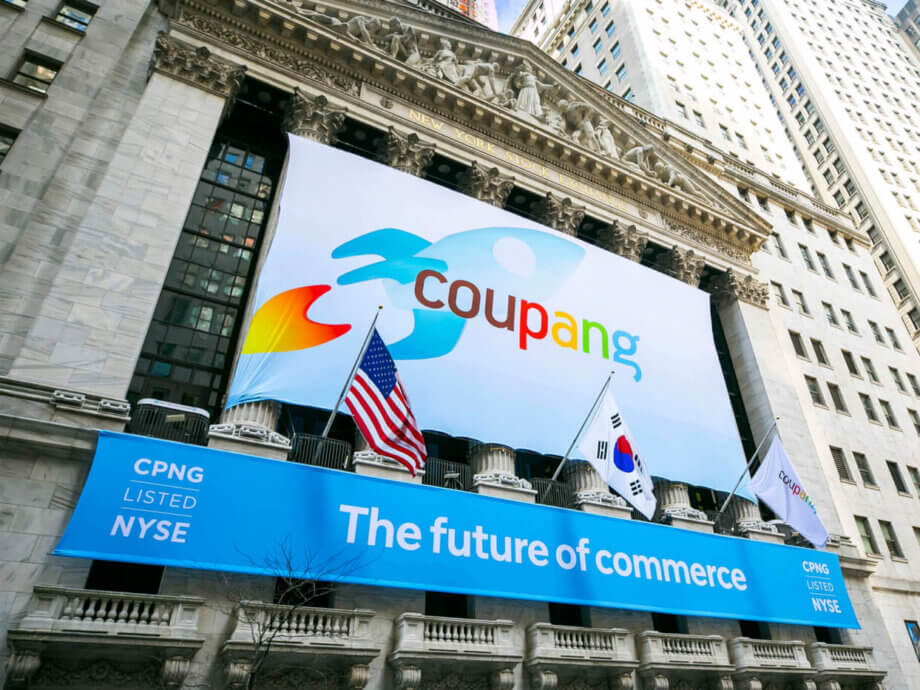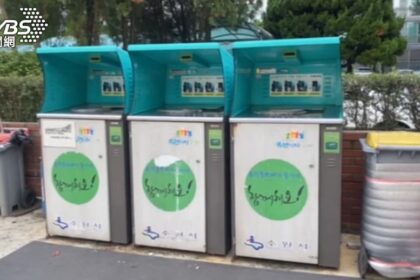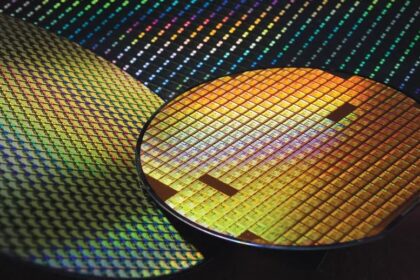Coupang’s Unexpected Entry into South Korea’s GPU Infrastructure Project
South Korea’s technology landscape is witnessing a significant shakeup as Coupang, the nation’s leading e-commerce giant, has entered a high-stakes government bid to secure and operate high-performance graphics processing units (GPUs). This move, which places Coupang alongside established cloud service providers like Naver Cloud, Kakao Enterprise, and NHN Cloud, signals ambitions that reach far beyond its current e-commerce and logistics operations. The government-led initiative, managed by the Ministry of Science and ICT and the National IT Industry Promotion Agency (NIPA), involves a massive investment of 1.46 trillion won (approximately $1.07 billion) to purchase 10,000 state-of-the-art GPUs. These resources will be made available to companies and researchers over a five-year period, aiming to bolster South Korea’s artificial intelligence (AI) and cloud computing capabilities.
- Coupang’s Unexpected Entry into South Korea’s GPU Infrastructure Project
- Why Is the South Korean Government Investing in GPUs?
- Coupang’s Cloud Ambitions: Following in Amazon’s Footsteps?
- Coupang’s Technical Capabilities: Strengths and Gaps
- The Competitive Landscape: Facing South Korea’s Cloud Heavyweights
- Strategic Moves: Infrastructure Investments and Talent Acquisition
- Broader Implications: What Does This Mean for South Korea’s Tech Ecosystem?
- Challenges Ahead: Can Coupang Overcome the Experience Gap?
- In Summary
The final selection of the project operator is expected in July, following a rigorous evaluation process that includes document reviews, technical presentations, and on-site inspections of data centers. The scale and strategic importance of this project have drawn intense industry attention, especially given Coupang’s surprise participation.
Why Is the South Korean Government Investing in GPUs?
GPUs are specialized processors originally designed for rendering graphics in video games, but they have become essential for modern AI and machine learning applications. Unlike traditional CPUs, GPUs can process thousands of tasks simultaneously, making them ideal for training large AI models, running complex simulations, and powering cloud-based services. As AI adoption accelerates globally, access to high-performance GPUs has become a critical bottleneck for innovation.
South Korea’s government recognizes this challenge and is investing heavily to ensure domestic companies and researchers have the computational resources needed to compete internationally. The project is part of a broader push under President Yoon Suk-yeol to position South Korea as a leader in AI and next-generation digital infrastructure. By centralizing GPU procurement and offering GPU-as-a-service (GPUaaS), the government aims to lower barriers for startups, universities, and established firms alike.
Coupang’s Cloud Ambitions: Following in Amazon’s Footsteps?
Coupang’s entry into the GPU bid has sparked widespread speculation about its long-term strategy. Industry observers note that Coupang has long benchmarked Amazon’s business model, evolving from an online retailer into a logistics powerhouse. Now, with this move, Coupang appears to be eyeing the next frontier: cloud computing, much like Amazon’s transformation into a global leader through Amazon Web Services (AWS).
While Coupang has not publicly commented on its participation, sources suggest the company is seeking operational experience in GPUaaS, which could lay the groundwork for a future pivot into the cloud services market. This would represent a significant shift, positioning Coupang as a direct competitor to established players like Naver Cloud, Kakao Enterprise, and NHN Cloud.
What Is GPU-as-a-Service (GPUaaS)?
GPUaaS refers to the provision of GPU resources over the cloud, allowing customers to rent computing power for AI training, data analysis, and other intensive tasks without investing in expensive hardware. This model is increasingly popular as demand for AI and machine learning grows, but access to high-end GPUs remains limited and costly.
By participating in the government’s GPU project, Coupang could gain valuable experience in managing large-scale GPU infrastructure, a critical step toward building a competitive cloud platform.
Coupang’s Technical Capabilities: Strengths and Gaps
Despite its ambitions, Coupang faces significant challenges. Unlike its rivals, Coupang does not have a public track record of operating large-scale GPU clusters or offering GPUaaS to external customers. Naver Cloud, Kakao Enterprise, and NHN Cloud have already established themselves in this space, running substantial GPU infrastructure and serving a variety of enterprise clients.
However, Coupang is not starting from scratch. The company has extensive experience leveraging GPUs internally for its own services, such as Coupang Play (video streaming) and Coupang Eats (food delivery). According to a detailed engineering report, Coupang’s machine learning (ML) platform supports a wide range of AI applications, from personalized recommendations and search optimization to logistics forecasting and content understanding. The company has adopted advanced techniques, including large language models (LLMs) and multi-modal AI, to enhance customer experiences and operational efficiency.
How Does Coupang Use AI and GPUs Today?
Coupang’s AI journey has evolved rapidly in recent years. The company employs machine learning for:
- Personalized product recommendations and search results
- Dynamic pricing and logistics optimization
- Content analysis for product catalogs and user reviews
- Image and language understanding for cross-border e-commerce
To support these applications, Coupang has built a hybrid infrastructure that combines on-premises GPU clusters with cloud-based resources across Asia-Pacific and the US. The company uses open-source frameworks and tools like DeepSpeed, Nvidia Triton, and Ray to maximize resource efficiency and enable rapid experimentation. This approach has allowed Coupang to train and deploy large AI models, including LLMs with billions of parameters, despite the global shortage and high cost of GPUs.
Still, operating a public GPUaaS platform at national scale is a different challenge, requiring robust systems for multi-tenant management, security, billing, and rapid recovery from failures. These are areas where Coupang’s experience remains largely internal and unproven in the broader cloud market.
The Competitive Landscape: Facing South Korea’s Cloud Heavyweights
The government’s GPU project has attracted fierce competition from the country’s top IT firms. Naver Cloud, Kakao Enterprise, and NHN Cloud each bring years of experience in cloud services, with established GPUaaS offerings and large-scale data center operations. These companies have invested heavily in infrastructure, talent, and partnerships to serve a growing base of enterprise and research customers.
According to industry sources, the evaluation process for the GPU project will consider not only technical capabilities but also operational stability, scalability, and the ability to recover quickly from system failures. This puts Coupang at a potential disadvantage, as its competitors have already demonstrated their expertise in these areas through existing commercial services.
What Are the Selection Criteria?
The Ministry of Science and ICT will review the appropriateness of submitted business plans, conduct technical and on-site evaluations, and assess the financial and operational readiness of each bidder. The final decision is expected after contract negotiations in July. A government official emphasized the importance of stability and reliability, noting that the ability to recover from system failures is a key requirement for the project’s success.
Industry source familiar with the process explains:
“Coupang is not disqualified by regulation. But its limited hands-on experience with GPU infrastructure could be a critical shortfall.”
Despite these challenges, Coupang’s bid is being closely watched as a potential game-changer in the market. If successful, it could accelerate the company’s transformation into a next-generation cloud provider and disrupt the current balance of power in South Korea’s tech industry.
Strategic Moves: Infrastructure Investments and Talent Acquisition
Coupang’s ambitions are backed by a series of strategic investments. The company is reportedly working with Singapore-based Empyrion DC to lease space at the KR1 data center in Seoul’s Yangjae area, a move that would provide the physical infrastructure needed to support large-scale GPU operations. In addition, Coupang has been aggressively recruiting talent with expertise in cloud computing, AI, and GPU management, signaling a long-term commitment to building its technical capabilities.
These efforts mirror the early days of Amazon’s expansion into cloud services, where heavy investment in infrastructure and talent laid the foundation for AWS’s eventual dominance. While Coupang’s path is far from guaranteed, its willingness to invest in cutting-edge technology and compete with established players demonstrates a bold vision for the future.
Broader Implications: What Does This Mean for South Korea’s Tech Ecosystem?
The outcome of the government’s GPU project will have far-reaching implications for South Korea’s digital economy. By making high-performance computing resources widely available, the initiative aims to democratize access to AI and cloud technologies, fostering innovation across industries. For startups and researchers, this could mean lower costs and faster development cycles, enabling new breakthroughs in fields ranging from healthcare to autonomous vehicles.
If Coupang succeeds in its bid, it could inject fresh competition into the cloud services market, driving down prices and spurring further innovation. Even if it falls short, the experience gained from participating in such a large-scale project could accelerate Coupang’s internal development and position it for future opportunities.
Another industry observer notes:
“If Coupang can gain practical experience through a project of this scale, it could rapidly internalize GPU technology and accelerate its pivot into cloud computing.”
For the government, the project represents a strategic investment in national competitiveness, ensuring that South Korea remains at the forefront of the global AI race.
Challenges Ahead: Can Coupang Overcome the Experience Gap?
Despite its strengths, Coupang faces a steep learning curve. Operating a public GPUaaS platform requires not only technical expertise but also robust systems for customer support, security, and compliance. The company will need to demonstrate its ability to manage complex, multi-tenant environments and deliver reliable service at scale.
Moreover, the costs associated with data center operations, hardware procurement, and ongoing maintenance are substantial. Coupang’s ability to absorb these costs and compete with established providers will be closely scrutinized by both the government and the market.
Nevertheless, Coupang’s track record of rapid innovation and willingness to invest in new technologies suggests it is well-positioned to learn quickly. The company’s internal use of GPUs for AI and machine learning provides a solid foundation, and its ongoing infrastructure and talent investments indicate a serious commitment to the cloud market.
In Summary
- Coupang has entered a major government-led bid to operate high-performance GPUs, signaling ambitions to expand beyond e-commerce into cloud services.
- The South Korean government is investing over $1 billion to provide GPU resources for AI and research, aiming to boost national competitiveness.
- Coupang faces stiff competition from established cloud providers like Naver Cloud, Kakao Enterprise, and NHN Cloud, all of whom have proven GPUaaS platforms.
- While Coupang has extensive internal experience with AI and GPU infrastructure, it lacks a public track record in large-scale GPUaaS operations.
- The company is making strategic investments in data centers and talent, mirroring Amazon’s early cloud strategy.
- The outcome of the bid could reshape South Korea’s cloud services market and accelerate innovation across industries.
- Regardless of the result, Coupang’s participation marks a bold step toward becoming a next-generation technology leader in the region.



![萧秉治 Xiao Bing Chih [ Project X ] 巡回演唱会专辑 Live Tour Album ::: 数位平台全 …](https://asiadaily.org/wp-content/uploads/2025/06/3db26ad412c3a4096ddc330e0cf4feca65904a3f-150x150.jpg)








